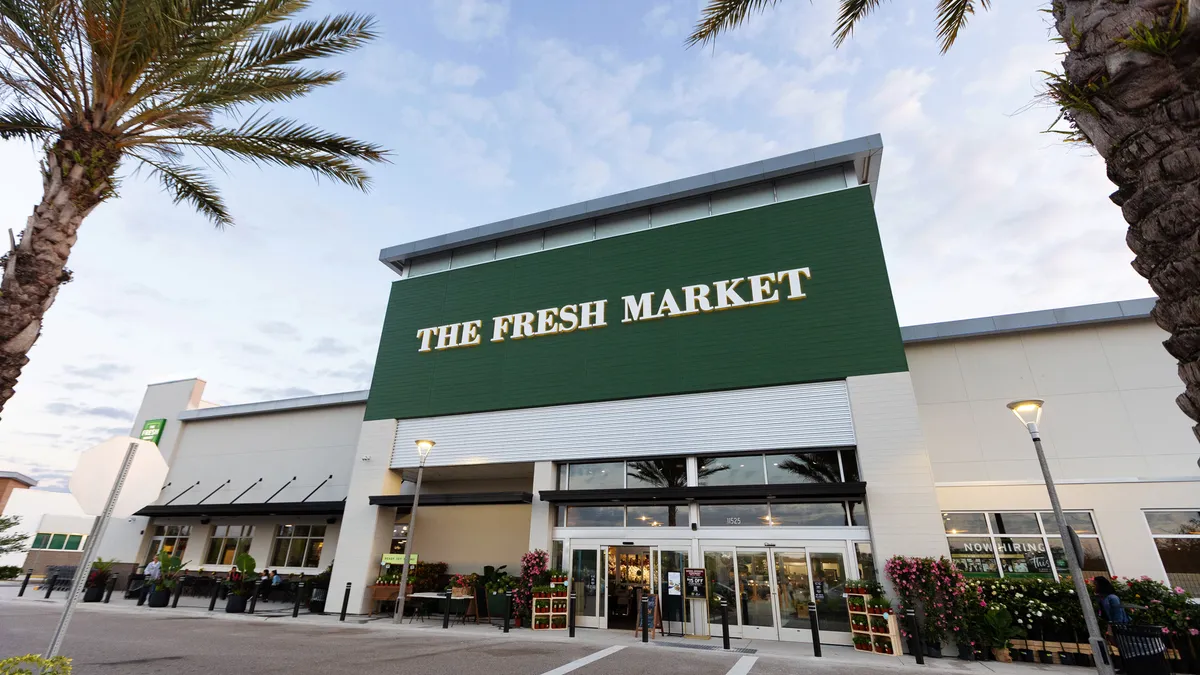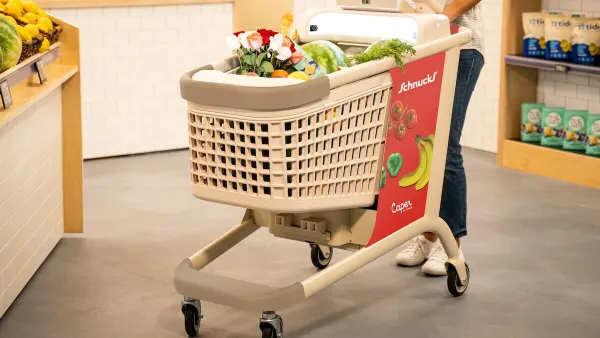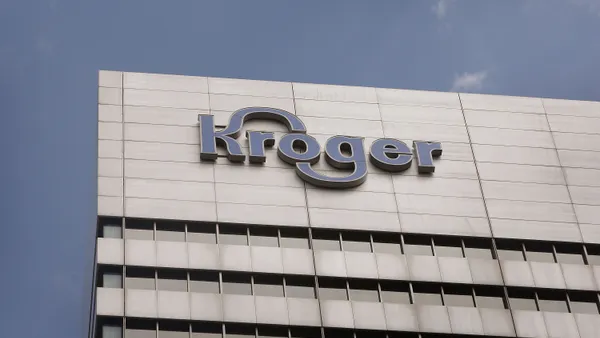Dive Brief:
- Grocery e-commerce sales fell 7% year-over-year in July, to $7.2 billion, driven by a sharp decline in order frequency across all fulfillment methods as well as a reduction in the value of the average digital transaction, according to survey data released Wednesday by Brick Meets Click and Mercatus.
- The number of households that purchased groceries online rose 5% overall last month compared with the same period in 2022, as pickup’s base of monthly active users was up 7% even as the figure for delivery slipped 1%.
- Online grocery sales are likely to remain under pressure throughout 2023 as a variety of financial headwinds continue to push shoppers to prioritize costs over convenience, Brick Meets Click partner David Bishop said in an interview.
Dive Insight:
The decline in digital grocery sales recorded in July continues a downward pattern that has been unfolding this year as uncertain economic conditions persist and consumers deal with mounting costs.
Factors such as the end of emergency SNAP benefits earlier in 2023 and the impending resumption of student loan payments in September following a pandemic-induced hiatus have created conditions that are particularly unfavorable for the online grocery space, Bishop said. The pressures are strong enough that they are likely to continue to hold grocery e-commerce back during the first half of 2024, he said.
“The pullback that we’ve been seeing now has been a long time coming and something that we expected,” Bishop said. “It was pretty clear that this was going to be a very challenging year, primarily starting in the second half … we’re starting to see what we expected, which is purchasing power becoming more constrained [and] consumers having fewer options in terms of where they can go to recapture some lost purchasing power.”
Pickup accounted for $3.3 billion in online grocery sales in July, or about 45% of the market, according to the survey, which was conducted on July 29 and July 30 and included responses from 1,795 adults. Delivery sales came in at $2.6 billion, representing a share of 36%, while the ship-to-home segment — made up of orders shipped by common carriers like UPS and FedEx — posted sales of $1.4 billion.
Mass merchants like Target and Walmart continued to make gains in the online arena in July at the expense of conventional grocery store operators, Brick Meets Click and Mercatus reported.
The mass segment saw a strong uptick in the number of shoppers who placed orders during the month, but traditional grocers recorded a smaller increase in terms of monthly active users, the survey found. Meanwhile, while order frequency was down across the board, mass merchants absorbed a significantly smaller hit than conventional supermarket operators.
E-commerce sales comprised 13.2% of total spending on groceries in July, a year-over-year drop of 1.3 percentage points. Excluding the ship-to-home segment, online grocery sales sagged to 10.7% of grocery spending, a reduction of 1.2 percentage points primarily attributable to delivery’s weak performance during the month, Brick Meets Click and Mercatus said.















